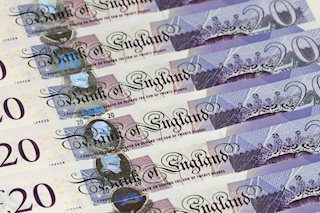GBP/USD holds below 1.3000 as traders brace for US GDP, employment data
|
- GBP/USD posts modest losses around 1.2970 in Tuesday’s early Asian session.
- The uncertainty surrounding the US presidential election and geopolitical risks might support the USD.
- The expectation that the BoE would cut rates this year weighs on the GBP.
The GBP/USD pair trades with mild losses near 1.2970 on Tuesday during the early Asian session. The US Dollar Index (DXY) currently trades flat around 104.30 after reaching a three-month high of 104.57 in the previous session. Traders might prefer to wait on the sidelines ahead of the key US economic data this week.
The encouraging US economic data last week suggests that the US economy remains resilient, lifting the Greenback. The advanced US Q3 Gross Domestic Product (GDP) and the October Nonfarm Payrolls (NFP) this week will be closely watched as they might offer some hints about the size and speed of the US Federal Reserve’s (Fed) rate cuts. US rate futures have priced in 96.8% odds that the Fed will cut rates by 25 basis points (bps) in November, according to the CME FedWatch tool.
Meanwhile, the uncertainty over the US presidential election and the ongoing geopolitical tensions in the Middle East are likely to support the US Dollar (USD), the safe-haven currency.
The rising bets that the Bank of England (BoE) would cut the interest rates in all two remaining meetings this year might drag the Pound Sterling (GBP) lower. However, the hawkish remarks from the BoE policymaker Catherine Mann might cap its downside. BoE’s Mann, an outspoken hawk, said last week "It would be premature to cut rates if you have structural persistence in the relationship between wages and price formation.”
Pound Sterling FAQs
The Pound Sterling (GBP) is the oldest currency in the world (886 AD) and the official currency of the United Kingdom. It is the fourth most traded unit for foreign exchange (FX) in the world, accounting for 12% of all transactions, averaging $630 billion a day, according to 2022 data. Its key trading pairs are GBP/USD, also known as ‘Cable’, which accounts for 11% of FX, GBP/JPY, or the ‘Dragon’ as it is known by traders (3%), and EUR/GBP (2%). The Pound Sterling is issued by the Bank of England (BoE).
The single most important factor influencing the value of the Pound Sterling is monetary policy decided by the Bank of England. The BoE bases its decisions on whether it has achieved its primary goal of “price stability” – a steady inflation rate of around 2%. Its primary tool for achieving this is the adjustment of interest rates. When inflation is too high, the BoE will try to rein it in by raising interest rates, making it more expensive for people and businesses to access credit. This is generally positive for GBP, as higher interest rates make the UK a more attractive place for global investors to park their money. When inflation falls too low it is a sign economic growth is slowing. In this scenario, the BoE will consider lowering interest rates to cheapen credit so businesses will borrow more to invest in growth-generating projects.
Data releases gauge the health of the economy and can impact the value of the Pound Sterling. Indicators such as GDP, Manufacturing and Services PMIs, and employment can all influence the direction of the GBP. A strong economy is good for Sterling. Not only does it attract more foreign investment but it may encourage the BoE to put up interest rates, which will directly strengthen GBP. Otherwise, if economic data is weak, the Pound Sterling is likely to fall.
Another significant data release for the Pound Sterling is the Trade Balance. This indicator measures the difference between what a country earns from its exports and what it spends on imports over a given period. If a country produces highly sought-after exports, its currency will benefit purely from the extra demand created from foreign buyers seeking to purchase these goods. Therefore, a positive net Trade Balance strengthens a currency and vice versa for a negative balance.
Information on these pages contains forward-looking statements that involve risks and uncertainties. Markets and instruments profiled on this page are for informational purposes only and should not in any way come across as a recommendation to buy or sell in these assets. You should do your own thorough research before making any investment decisions. FXStreet does not in any way guarantee that this information is free from mistakes, errors, or material misstatements. It also does not guarantee that this information is of a timely nature. Investing in Open Markets involves a great deal of risk, including the loss of all or a portion of your investment, as well as emotional distress. All risks, losses and costs associated with investing, including total loss of principal, are your responsibility. The views and opinions expressed in this article are those of the authors and do not necessarily reflect the official policy or position of FXStreet nor its advertisers.